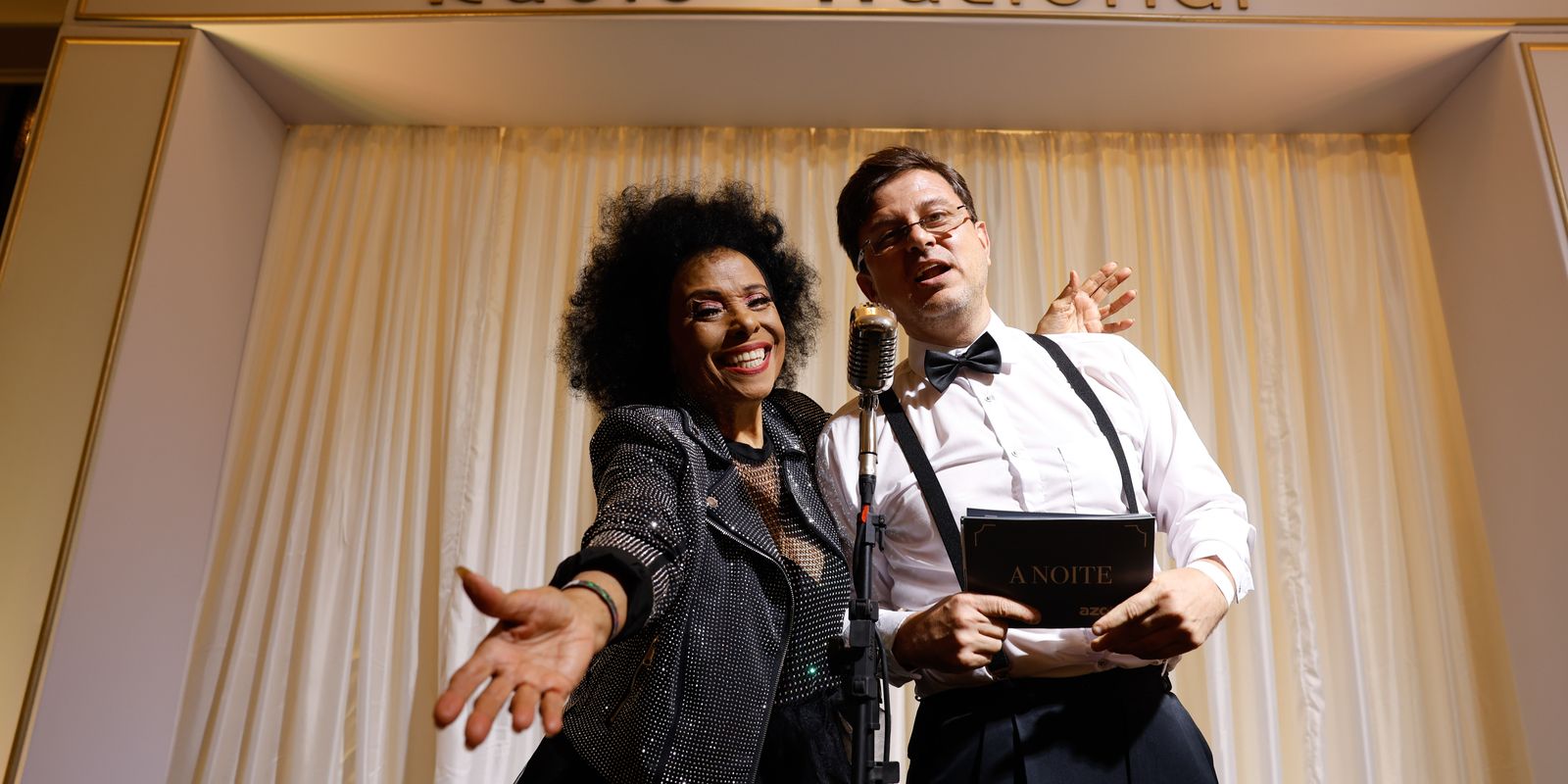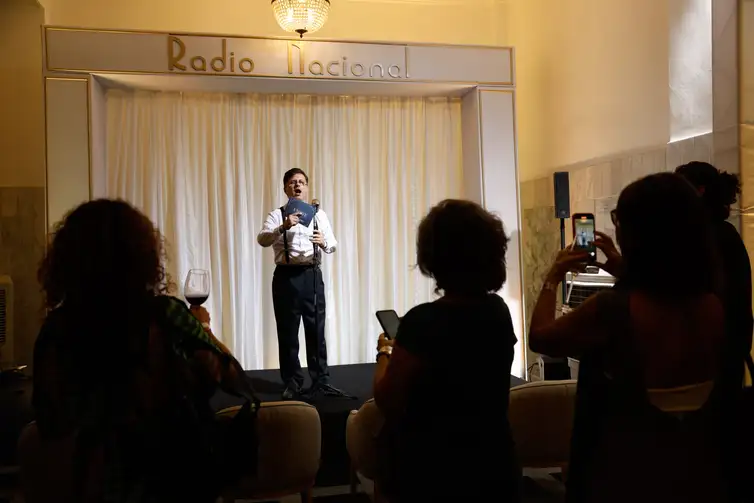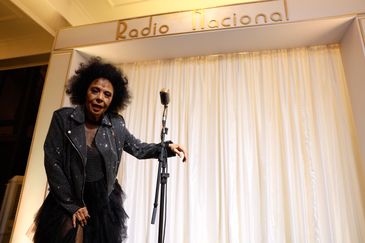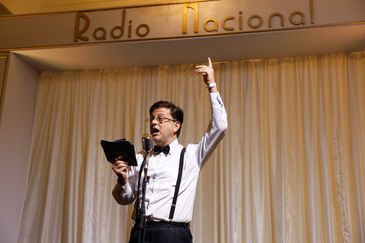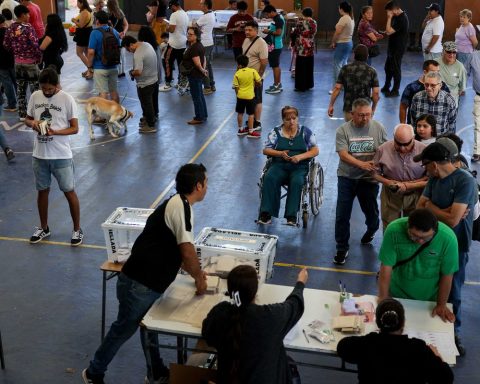The A Noite Building, in downtown Rio de Janeiro, had its renovation project officially launched on Friday night (13). The word “renovation”, in this case, represents the main challenge of the project. In the dictionary, the word has two completely opposite meanings: it can be either a return to a previous “form” or a transformation that creates a new and better “form”. In the case of the building, it is therefore a matter of modernizing the structure and preserving an almost century-old history at the same time.
Sold in July 2023 by the city of Rio, the 22-story building housed Rádio Nacional and the National Institute of Industrial Property (INPI). As it is a structure listed by the National Institute of Historic and Artistic Heritage (Iphan) since 2013, certain structures need to be maintained, such as the facade itself.
The buyer, a private investor, will transform it into a residential complex with 447 units. There are plans for a restaurant area on the ground floor and, on the terrace, a space open to visitors with a viewing platform. It was also announced that there will be a memorial for Rádio Nacional and a sort of walk of fame to honor artists who have worked at the radio station.
For the historians interviewed by the report of Brazil Agencythe preservation of this memory must be taken seriously, due to its importance for the country’s architectural and cultural history.
“The A Noite Building was built in the 1920s, when Rio de Janeiro was beginning to undergo a process of verticalization. It was a radical change in the way Rio residents lived. People were starting to live in apartments,” says historian Douglas Liborio. “Preserving this memory of the transformation in the ways of living has an impact on a fundamental pedagogical logic for the construction of citizenship and the recognition of the right to the city. A heritage site only has meaning if it is thought of from the perspective of the occupation of individuals.”
For artists who participated in the golden age of radio and built part of the history of communication in the country, it is important that this legacy is not lost.
“The building is a testament to the vital force of radio in the world. I sang here on the César de Alencar program. And it was incredible, wonderful. I began to enjoy the corridors of Rádio Nacional, with Roberto Carlos, Caubi Peixoto, Angela Maria, Emilinha, everyone who gets together. I am very happy with the promise that this memory will be preserved, in some way,” said Eliana Pittman, Brazilian singer and actress.
Architectural and social landmark
The building’s history is directly associated with the newspaper A Noite, created on July 18, 1911, which became one of the most popular in the city. A change in management in the 1920s led to a project to expand the newspaper, which included the construction of its own skyscraper-style headquarters. The lot for the construction belonged to the former Liceu Literário Português, in Praça Mauá. The project was developed by architect Joseph Gire. The Frenchman was already responsible for buildings such as Palácio Laranjeiras, Hotel Glória and Copacabana Palace.
“The insertion of A Noite there at the entrance to the old Avenida Central, now Avenida Rio Branco, is closely associated with the logic of modern construction in the country. Although it has all the influence of reinforced concrete, it is already close to the construction principles of the Chicago school in the United States,” said Douglas Liborio. “It is associated with the aesthetics of Rio, but distances itself from the so-called historicist architecture, inspired by French models, which dominated the landscape. It was very much guided by the art decowith a regular appearance, discreet ornamentation, with an emphasis on volume. At the time, it was called an architectural prodigy”.
At night
The Joseph Gire Building, popularly known as A Noite, was inaugurated in 1927. In May 1933, the A Noite group decided to expand its business and established Sociedade Civil Brasileira Rádio Nacional. It officially opened in September 1936, on the top floor of the building. In 1940, the Getúlio Vargas government took over all the assets of the São Paulo-Rio Grande Railway Company. This included control of the A Noite group and Rádio Nacional.
“The waves of Nacional took over Brazil. Mainly after Vargas’ Estado Novo. Because when it was taken over by Vargas, it became an instrument for disseminating major national issues and projects. Furthermore, it was innovative in all aspects of Brazilian radio. From the auditorium programs, which filled the 21st floor. Almost five hundred seats full. The auditorium was excited to see everyone who participated in the programs. And it was innovative in radio soap operas, which made people stay with their ears glued to the radio, experiencing all the emotions possible”, explains historian Antonio Edmilson.
Among the first and most important changes at Rádio Nacional were the debut of Repórter Esso in 1941 and the Colgate Radio Theater, with the first radio soap opera “Em busca da Felicidade” (In Search of Happiness). The physical space was remodeled and an auditorium for 486 people was built on the 21st floor. The Radio began to occupy the last four floors.
Memory initiatives
And since one of the initiatives announced to preserve this radio memory involves a “walk of fame”, which names would have to be there?
“Aracy de Almeida cannot be left out. Neither can Marília Batista, nor Radamés Gnattali, nor the drama team at Rádio Nacional. And there are many artists, such as Carlos Galhardo, Heron Domingues, Lamartine Babo, Chico Anysio. There are many people who are important and deserve to be remembered,” said historian Antonio Edmilson. “They will need a lot of sidewalks and I don’t know if that will be enough to cover everything that represents the importance of the building and Rádio Nacional.”
Other famous names could also be mentioned, such as Emilinha Borba, Marlene, Dalva de Oliveira, Luiz Gonzaga, Cauby Peixoto, Elizeth Cardoso, César de Alencar and Paulo Gracindo. The historian, however, understands that it would be important to go beyond the sidewalk and the reproduction of the radio studio.
“I think that in some way it was necessary to make a golden book of the building, which could be handled by people, a documentary about the entire construction process, to leave a memory that was anchored in the visual technologies that we have today, beyond those traditional standards”, argues Antonio Edmilson.
As part of this history also involves architectural features, historian Douglas Liborio lists what would be essential to preserve from the building’s structural features.
“It is very worthwhile to recover what was hall entrance, because it was one of the great landmarks of the art decowhich is inspired by the interior of ocean liners. It is very clear in the pillars of the halls and in the very spacious environment of the entrance halls. Another important feature of Art Deco is the opening of windows, which is very characteristic of the style. Regular and standardized opening”, said the historian. “Maintaining the terrace with a view of Guanabara Bay. To recover it as a space for public enjoyment and viewing. It marks the Rio landscape. And this is particular to the construction of Rio de Janeiro. We are talking about the entrance to the city, the new port at the beginning of the Republic.”
